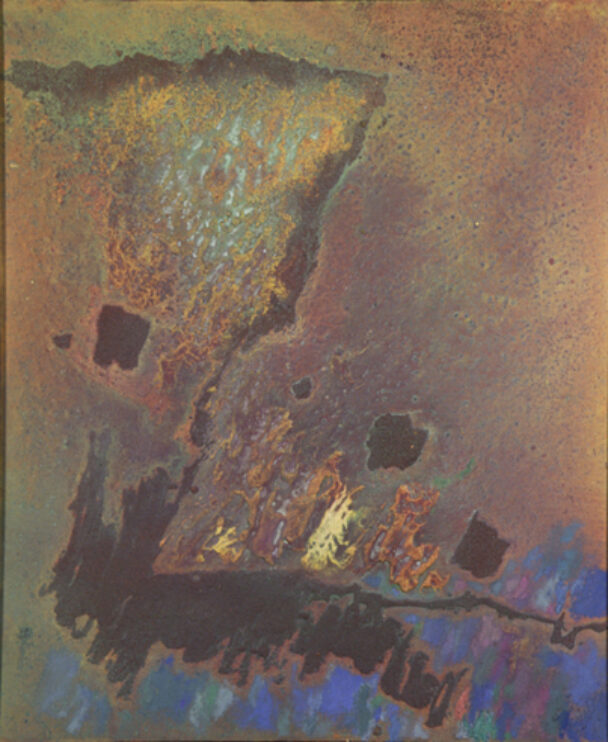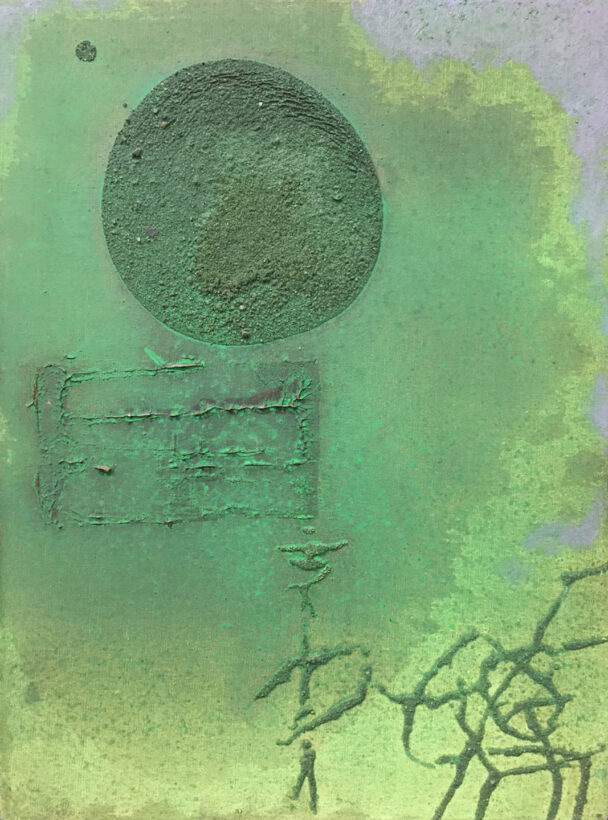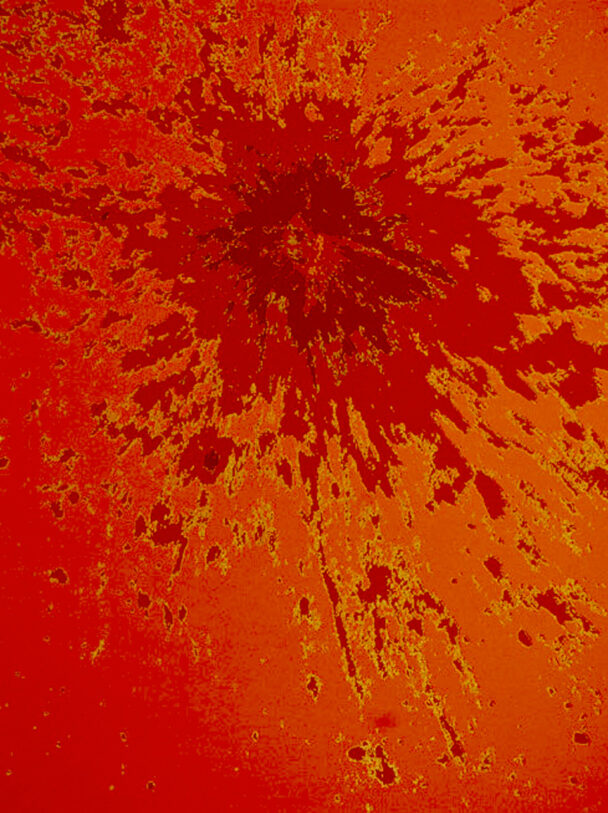Integrated Vision is an exhibition of permanent collection work that brings together highly textured, luminously pigmented paintings by György Kepes and bold, graphic screen prints of the moon’s surface by Len Gittleman to create a dialogue about science, nature, and art.
Writing about people’s inability to fully grasp the infinite knowledge available in the world–particularly in light of modern scientific advances–Kepes called for an “integrated vision” that assimilated the rational and the emotional experience. Presented together in Integrated Vision, works by Kepes and Gittleman create a conversation about the artist’s role in examining and interpreting empirical knowledge of science and nature through the lens of art.
Gittleman’s Lunar Transformation is a series of ten vividly colored serigraphs created from black and white photographs taken during the Apollo 15 mission to the moon in 1971. Gittleman uses bright color to transform the craters and crevices of the lunar surface into vibrant abstractions which recall Abstract Expressionist painting. The strong graphic prints reflect the awe-inspiring nature of their source material.
Best known for his photography, design, and writings about the marriage of art and science, Kepes was also a prolific painter. His paintings served as a vehicle for exploration of the relationship between structural and gestural marks, terrestrial and celestial allusions, and physical and metaphysical experiences. While abstract, the earthy texture and biomorphic shapes in Kepes’ paintings hint at landscapes, cosmic bodies, or amoebic forms.
Photographs by each artist will also be included to provide context for the serigraphs and paintings in relationship to the artists’ larger practices. Gittleman’s Polaroid photograms, like his serigraphs, use color and light to render abstract forms. Striking illusions of three-dimensionality appear in these images, which present a strong formal arrangement of shape, color, and shadow. Kepes’ photographs reveal a clear correlation with his paintings: both combine expressive lines and atmospheric lighting effects, reflecting his study of the intersection of science, art, and nature.


